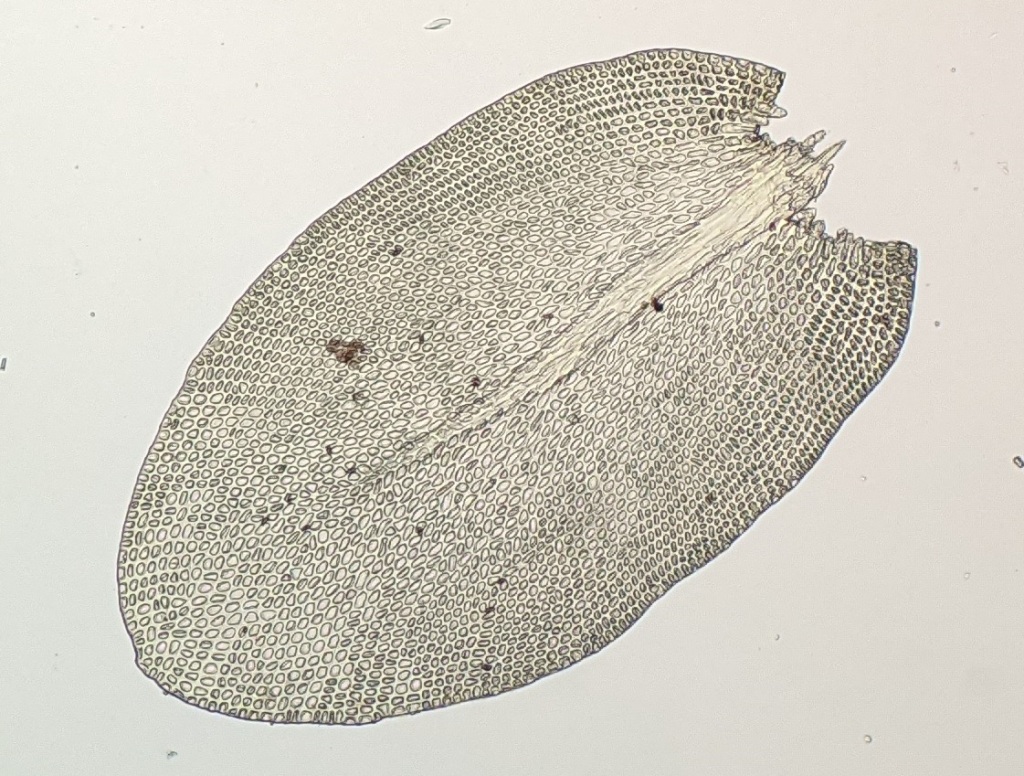Leptodon smithii
(Hedw.) F.Weber & D.MohrDioicous. Asexual propagules absent. Mats on tree trunks and rocks, dark or golden-green. Stems pinnately to bipinnately branched, with abundant paraphyllia, brown or orange-brown; primary branches, with scattered fascicles of brown rhizoids; secondary branches once or twice branched, 10–25 (–40) mm long, strongly curled upwards and inrolled when dry, curved when moist. Leaves ovate or elliptic, mostly asymmetric, 0.4–1.5 mm long, 0.2–1 mm wide, concave adaxially, often with a single fold on each side of costa, spreading when moist, little altered to appressed when dry; costa extending c. ¾ leaf length; margins entire or weakly crenulated near apex, inrolled in basal half, without a distinct border; apex rounded, without a hairpoint; base cordate or weakly decurrent, usually slightly auriculate on one side; laminal cells smooth, isodiametric, oval or rounded-hexagonal to rhomboid, 5–15 μm long, 5–13 μm wide, gradually becoming more elongate toward the base, to 30 μm long and 10 μm wide near base; alar cells forming a large but weakly defined group of mostly indistinct quadrate to oblate cells, sometimes with c. 10–20 slightly enlarged and irregular cells in extreme angles. Setae c. 1.5–3 mm long, yellow-brown, with golden filaments at base, smooth. Capsules short-exserted, ellipsoid to cylindric, vertical, straight, c. 1.5–2 mm long, yellow-brown. Operculum rostrate from conic base, c. 0.7–0.9 mm long.
Gold, EGL.
Recorded in Victoria from two sites: Jones Creek in far East Gippsland where in warm temperate rainforest and from a boulder on Mount Alexander near Bendigo. Also QLD, NSW and ACT. New Zealand, North America, southern South America, western, central and Mediterranean Europe, eastern and southern Africa, and south-west Asia.
A distinctive species among Victorian mosses instantly recognised by the combination of branches the curl inwards like fiddleheads when dry, regularly pinnate to bipinnate branching and abundant paraphyllia.
Chloroplast and nuclear ITS sequences are more distantly related between some populations of L. smithii than between some L. smithii populations and the recently described L. corsicus Enroth, Sotiaux, D. Quandt & Vanderpoorten (Sotiaux et al. 2009). Further study is required to determine whether further species should be recognised within what is currently included in L. smithii or whether L. corsicus represents a species based on recent speciation involving few genes that have considerable influence over morphological appearance (Sotiaux et al. 2009).
 Spinning
SpinningSotiaux, A.; Enroth, J.; Olsson, S.; Quandt, D.; Vanderpoorten, A. (2009). When morphology and molecules tell us different stories: a case-in-point with Leptodon corsicus, a new and unique moss species from Corsica. Journal of Bryology 31: 186–196.


